Year of 2018 for BESPIN
Hello everyone! Anna here again.
My plan with this blog post was to do a big look back at the year we have had working with BESPIN. So here we go!!
December 2017:
As previously mentioned, this was the time we found out that we got accepted to the REXUS/BEXUS programme and the "real" work with project begun.
January 2018:
Time for writing our first SED (Student Experiment Documentation) and start preparing for the Preliminary Design Review (PDR). Writing our first SED was a bit chaotic. We still needed a lot of information and a lot of design decisions needed to be made, so everything was a bit confusing.
Also, how do you write an entire SED when you have exam-period at the same time?!
(Spoiler: We eventually learned this skill since the majority of our SED deadlines has been during exam periods.)

You can find our SED v1-0 here!
February 2018:
Now it is time to actually present our first design. A couple of team members, including me, went to Esrange here in Kiruna where the PDR and the Student Training Week were held. We went to a lot of lectures and was overflooded with information. We also did our PDR presentation and received a loooooooooot of feedback.
We also got the chance to talk to the organisers/experts to get some answers to most of our questions.
We also got the chance to talk to the organisers/experts to get some answers to most of our questions.

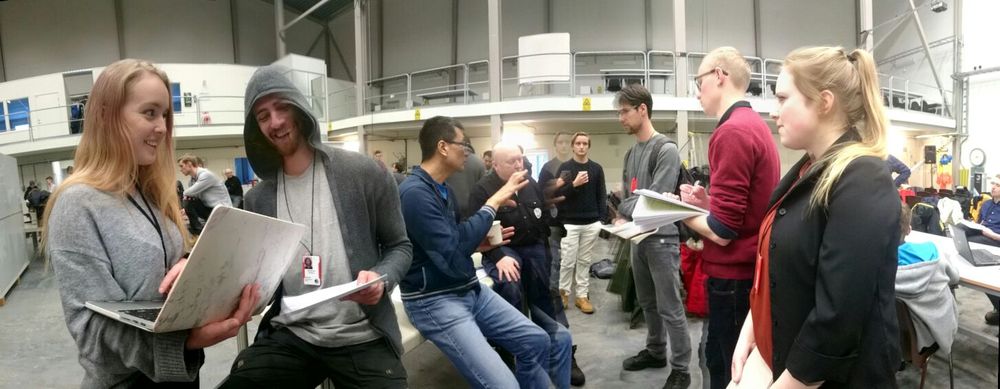
Pictures from the PDR and Student Training Week at Esrange
March 2018:
Since we received a lot of feedback, we were asked to write an SED v1-1. Therefore, we spent this month with writing that (and also doing exams...). This was also the time for the REXUS launch for Cycle 10, which we of course watched on a big screen!
This was also the time Fabian realised that you can use a fridge in a student corridor kitchen as a white board and do block diagrams.
This was also the time Fabian realised that you can use a fridge in a student corridor kitchen as a white board and do block diagrams.
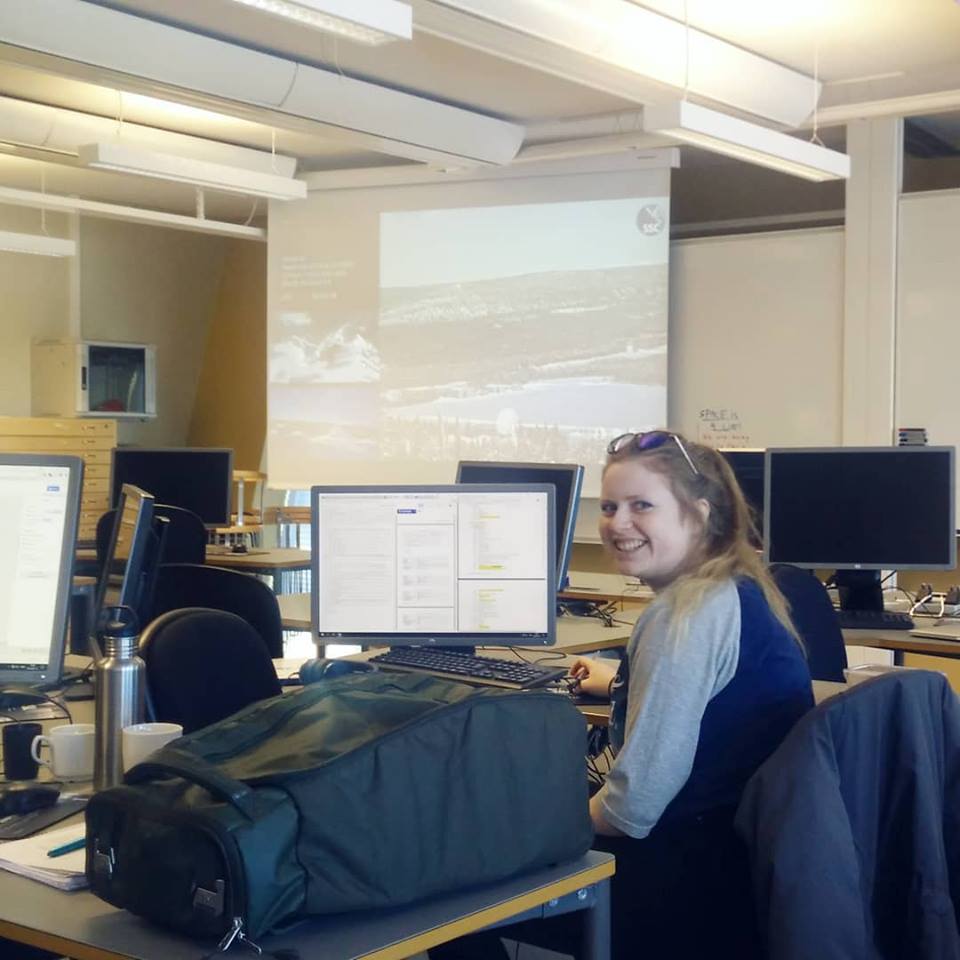
Writing SED and watching REXUS launch

Fabian doing block diagrams on our fridge
April 2018:
During April, the work continued. We had gotten a lot of feedback at this point so we worked with that mostly. We also did some Outreach work as presentations, started up this blog and got BESPIN merch for the team.
During April, the work continued. We had gotten a lot of feedback at this point so we worked with that mostly. We also did some Outreach work as presentations, started up this blog and got BESPIN merch for the team.
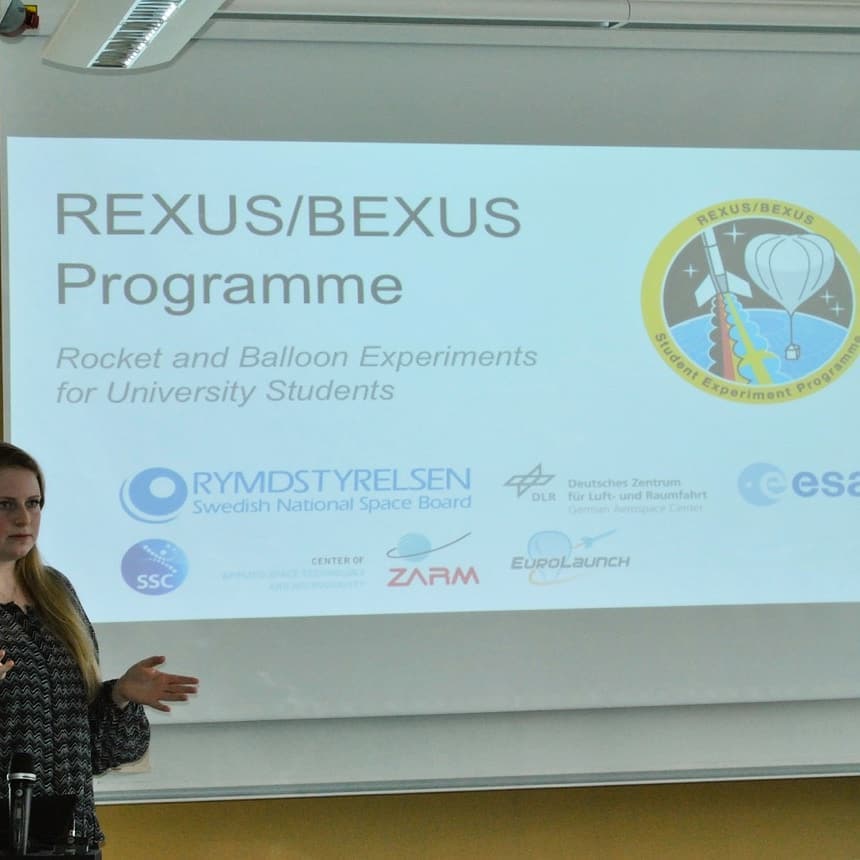
Presenting the REXUS/BEXUS programme and BESPIN
The deadline for SED v2-0 was at the end of May and the Critical Design Review (CDR) was at the beginning of June so we prepared for that during the month of May. This means a lot of meetings and design decisions and also a lot of writing and documenting. When we didn't do REXUS, we studied for exams, of course.
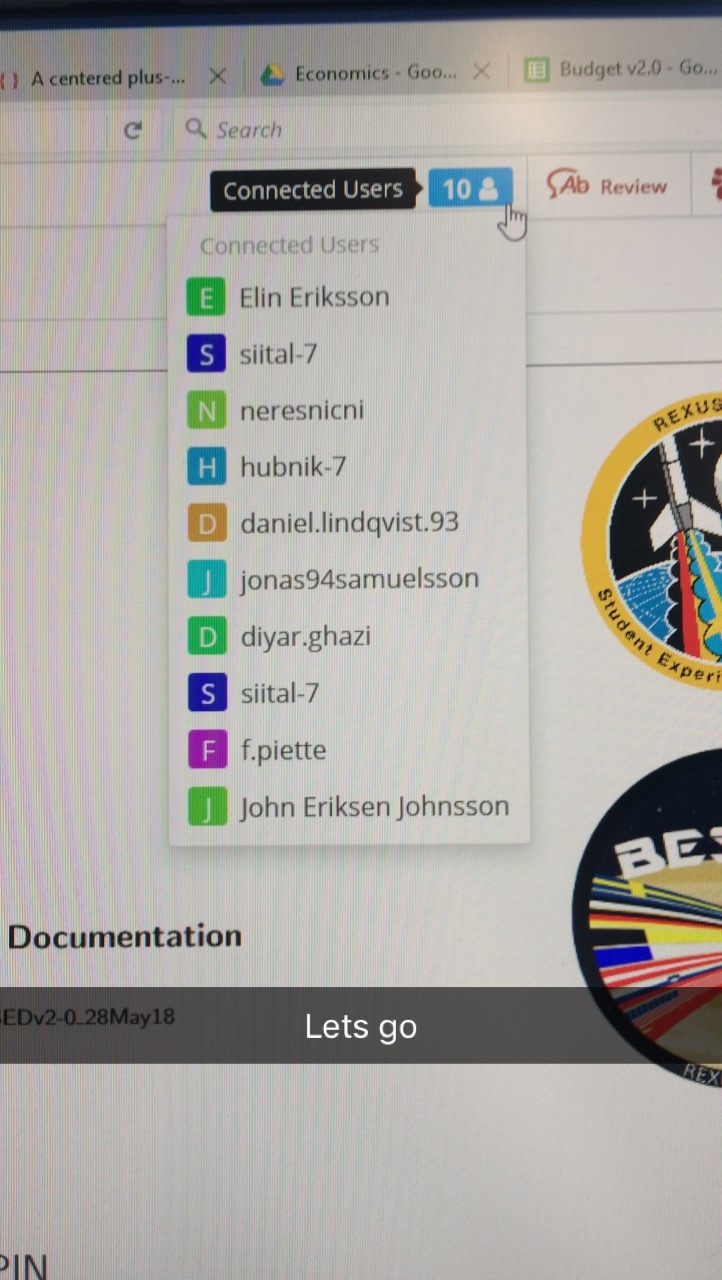
10 people writing in the SED, always exciting!
June 2018:
Time for CDR! Five team members traveled to Oberpfaffenhofen, Germany to present our updated design to the experts. We received a lot of feedback this time also.
Time for CDR! Five team members traveled to Oberpfaffenhofen, Germany to present our updated design to the experts. We received a lot of feedback this time also.
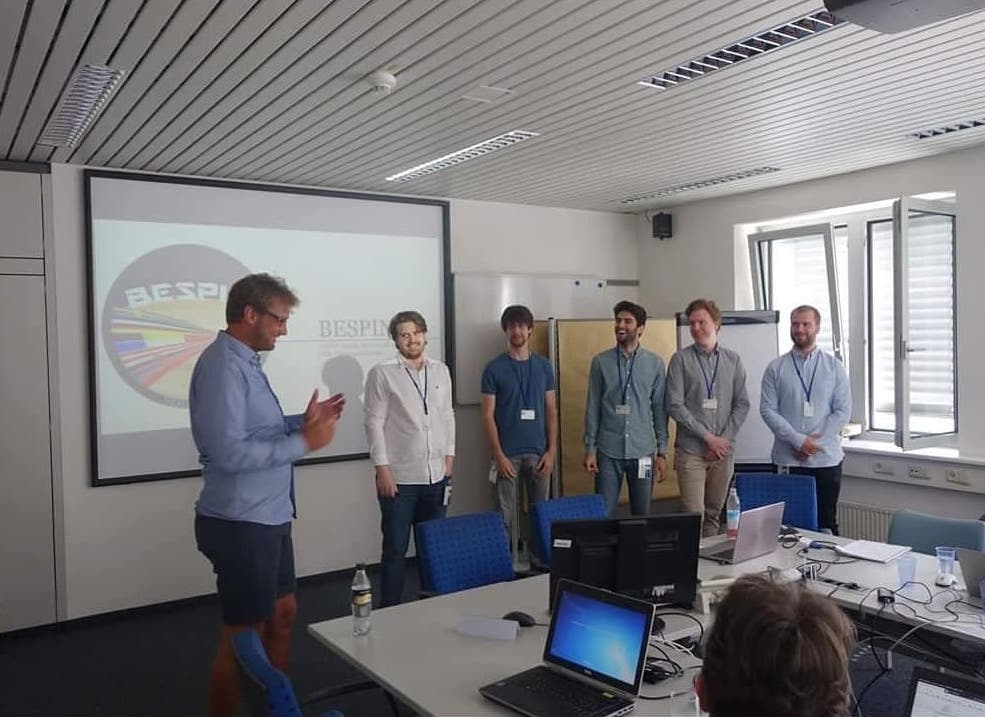
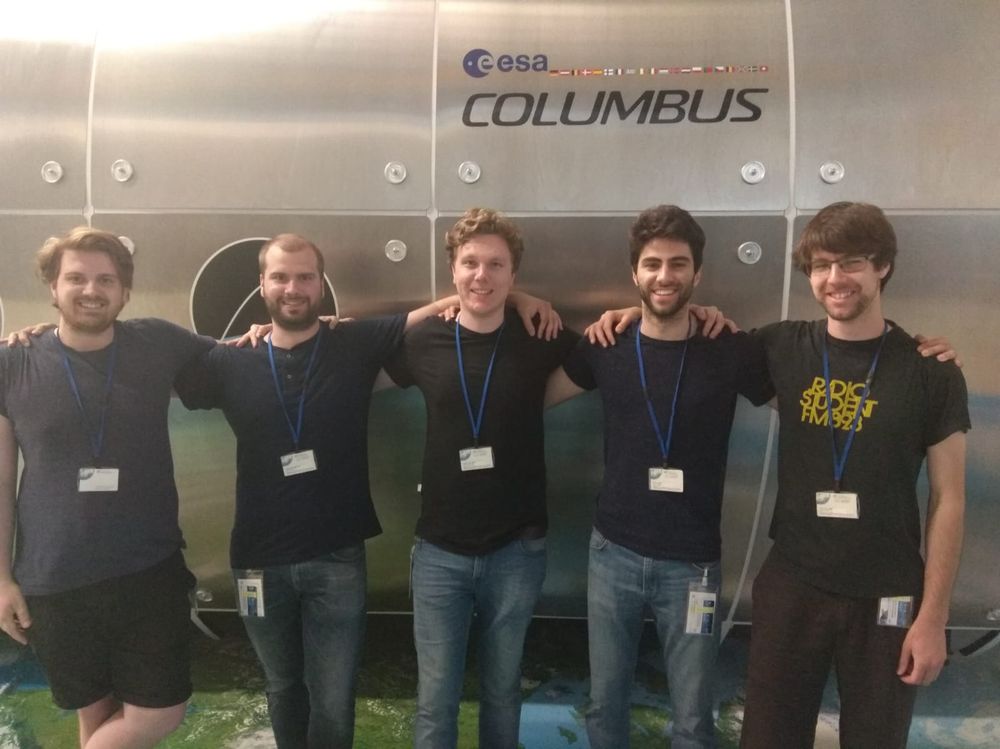
Jonas, Daniel, John, Diyar and Jaka at the CDR.
July 2018:
At the end of July it was time for our (first) IPR (Integration Process Review). This means that the organisers come and visit the teams at their universites to see how the work is going after the CDR. We got a visit from Stefan Krämer and also Hanno Ertel, who is our own mentor from ESA! He is super cool.
This was also the time we decided that the project was waaaaaay to big for us to be able to finish it. A decision about descoping the experiment was made together with Stefan and Hanno. This also meant that we basically had to start over. We had to go over and change requirements, schedules, risks and do a almost completely new design.
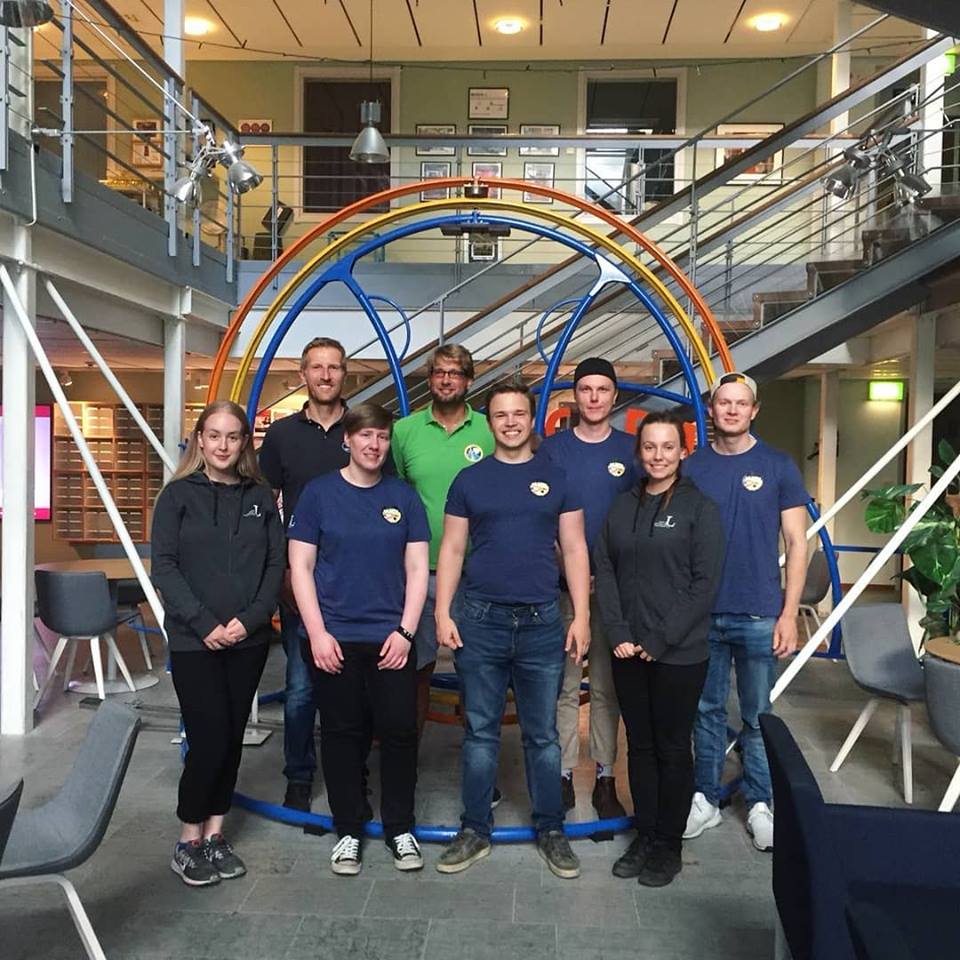
Hanno, Stefan, John, Joar, Elin, Cassidy, Ludvig and Terese at our Space Campus here in Kiruna for our first IPR.
August:
Since the project had change quite a lot, a new SED needed to be written so this is what we did during August. (Except when we did exams...). Always so much fun writing SEDs!
But this was also the first time we started doing some testing within Software and Electrical. That was actually fun!
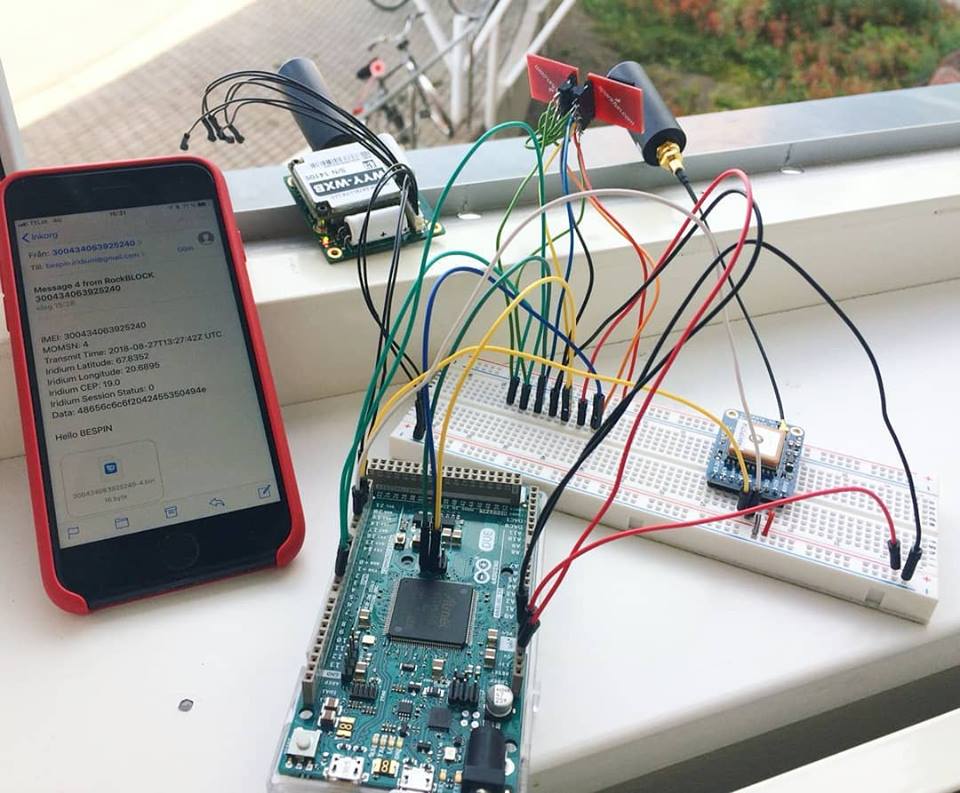
One of the first tests with IRIDIUM, antennas and GPS
We got a visit from Hanno and Stefan again at the end of August. It was called a Delta-CDR/IPR since we needed to update them about the new design but also present on how far we had come with the testing.
During the Delta-CDR/IPR there was a lot of discussion regarding the mechanical design which meant that we had to do a few changes before we could actually start the manufacturing.
September:
Our design was finalized in and approved by Stefan and Hanno in the beginning of September, finally!!! Now we can start ordering parts and start manufacturing and testing. The fun part!
But living in Kiruna is like doing a REXUS project on level: Hard. Why? Because everything takes a few days extra to deliver up here, if they even deliver at all. Also, it is a very small town and most of the time we can't even buy simple stuff at a hardware store.
At this point, the schedule started to be very tight so every day was important.
At this point, the schedule started to be very tight so every day was important.
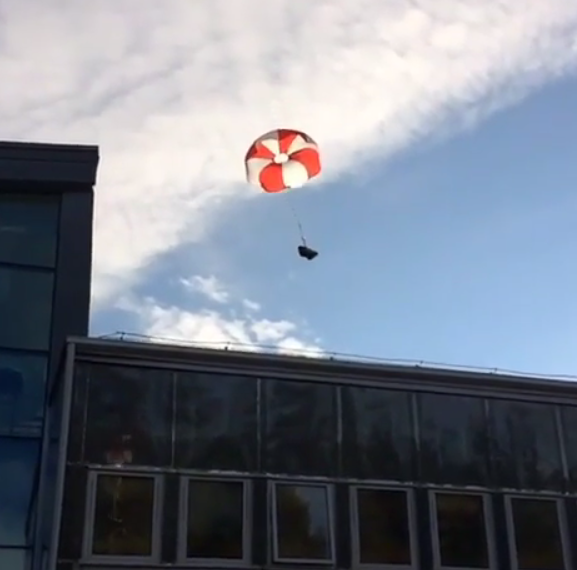
One of the first tests with our test parachute. Shoe used as dummy mass.
October:
A lot of our testing and manufacturing was done at this time. For example, our parachute test where we threw out our precious parachutes from a car on a lonely road outside Kiruna. This proved that our parachute system worked!
We also got a visit from Stefan again for our final IPR!
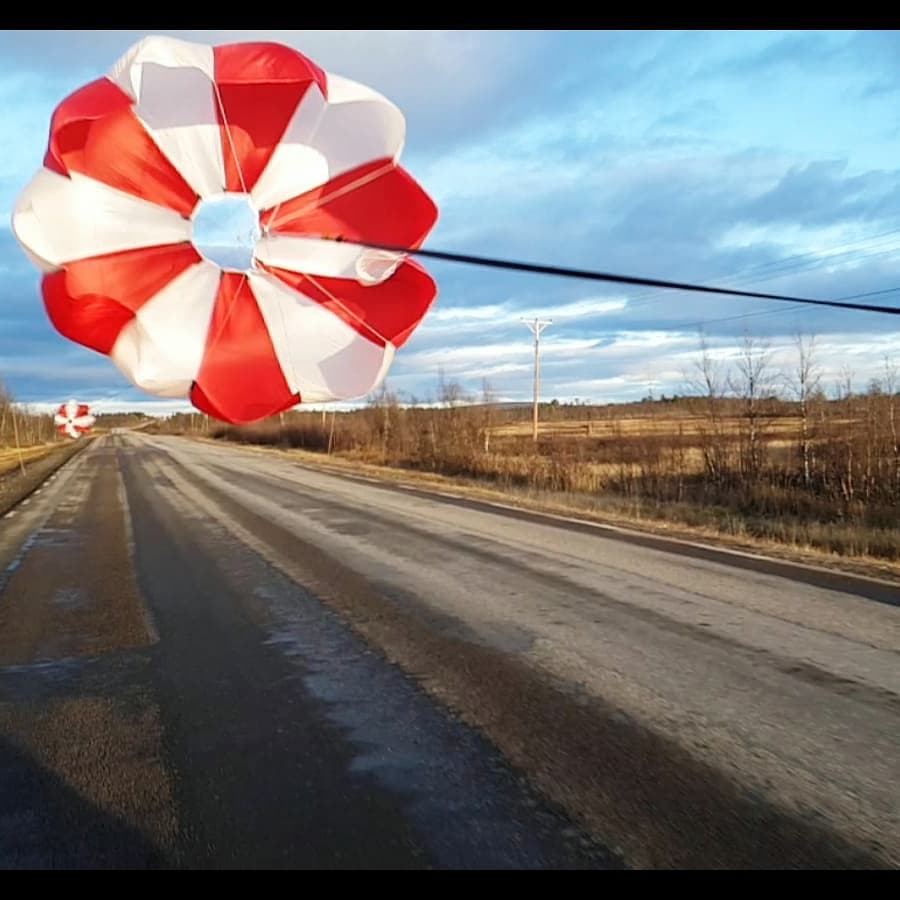
Parachute testing from car

Team member Oskar talks about mechanical stuff during our IPR presentation
November:
Time for Experiment Acceptance Review (EAR). Stefan comes to visit us in Kiruna one last time and we tell him about all the testing and manufacturing that has been done up until that point. A lot of testing was still left to do so we did not really pass the EAR but we got to travel to the Integration Week anyways.
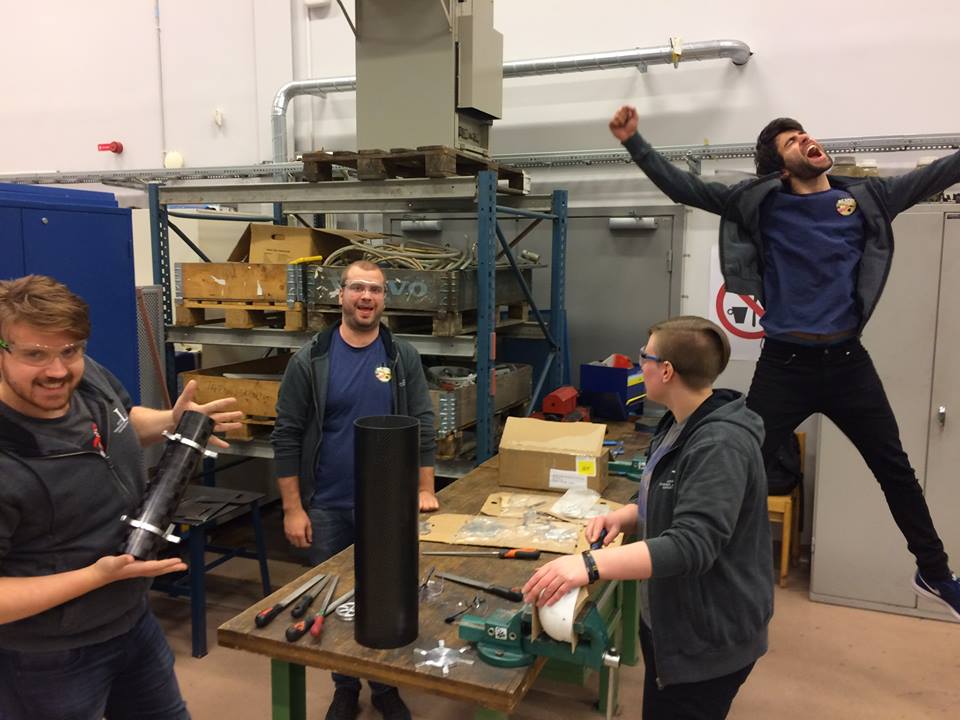
Jonas, Daniel, Cassidy and Diyar working in a mechanical workshop in Luleå

Cassidy with the internal structure of the experiment in our project lab in Kiruna
One test that we did during November was the drop test, where we dropped a copy of our experiment out of an airplane at an altitude of approx. 2 km. This was to check the aerodynamic stability.
After the test we could not find the structure immediately which meant that some brave team members had to put on warm clothes and go out into the wild nature of Kiruna and simply look for it. And luckily, they did find it! Which meant that we have data to analyze, exciting!
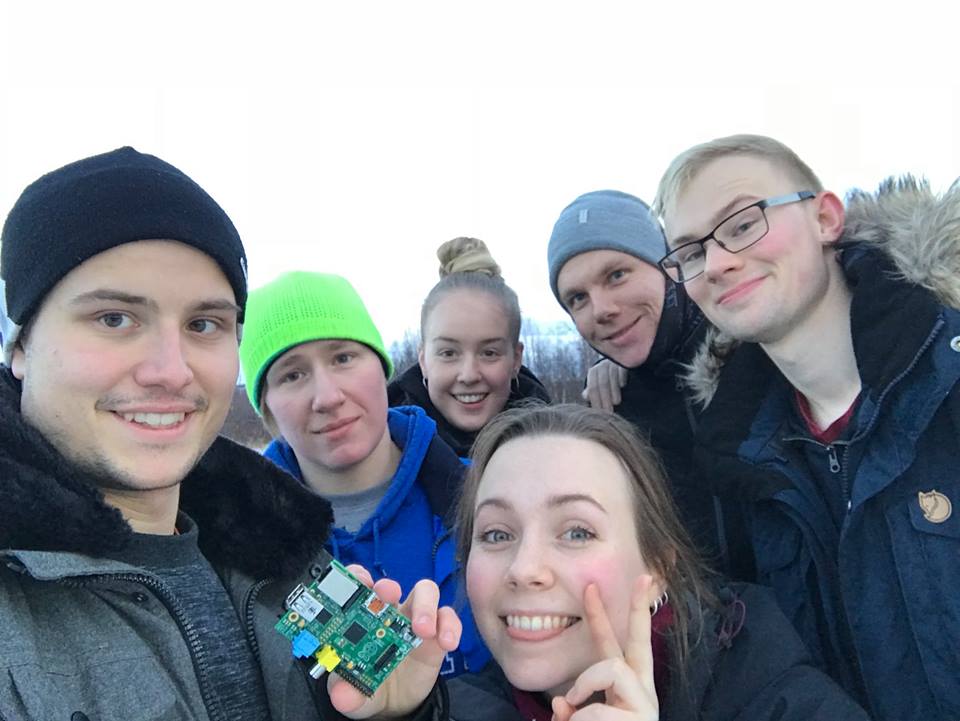
Brave team members with warm clothes in the wild nature of Kiruna
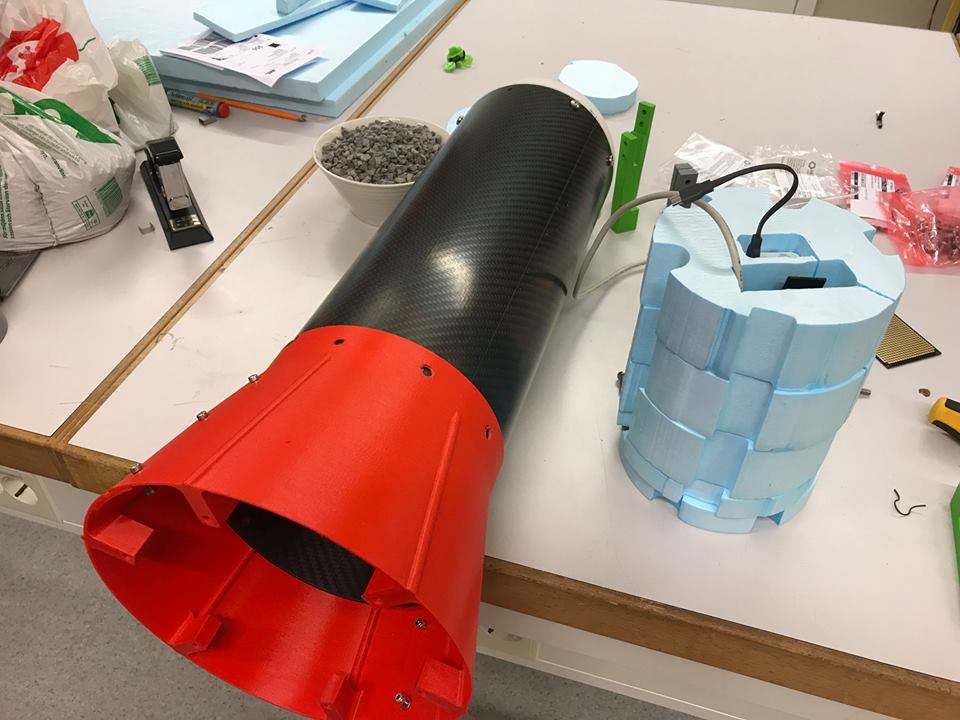
Drop test set-up
December:
Once again, four team members traveled to Bremen, Germany for the Integration Week. This is the first time we will test all the REXUS experiments together and also the first time we test with the rocket. The vibration test and fit check test under the nosecone went well. Other tests did not go as well unfortunatly. You can read more about the Integration Week in this blog post!
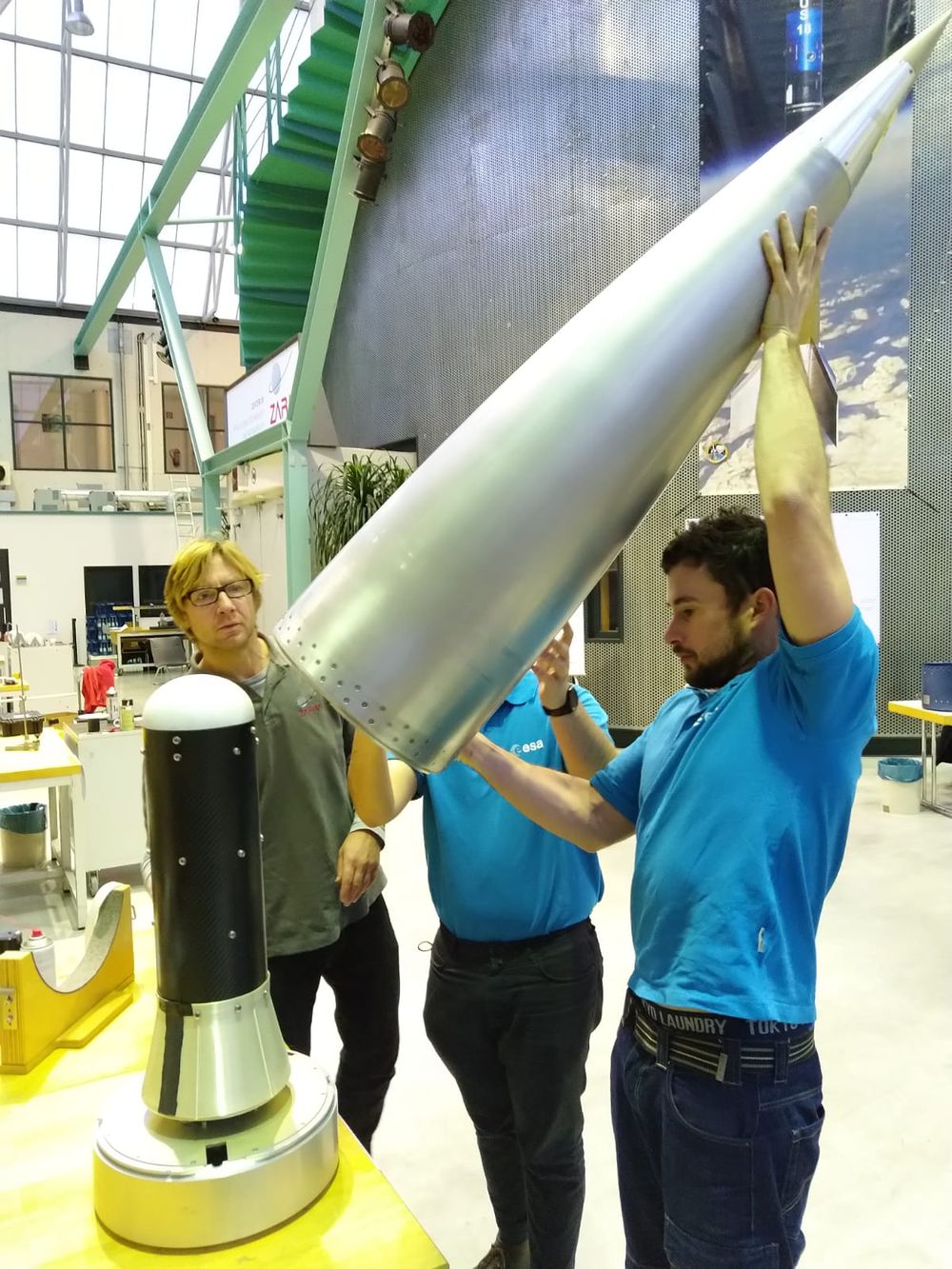
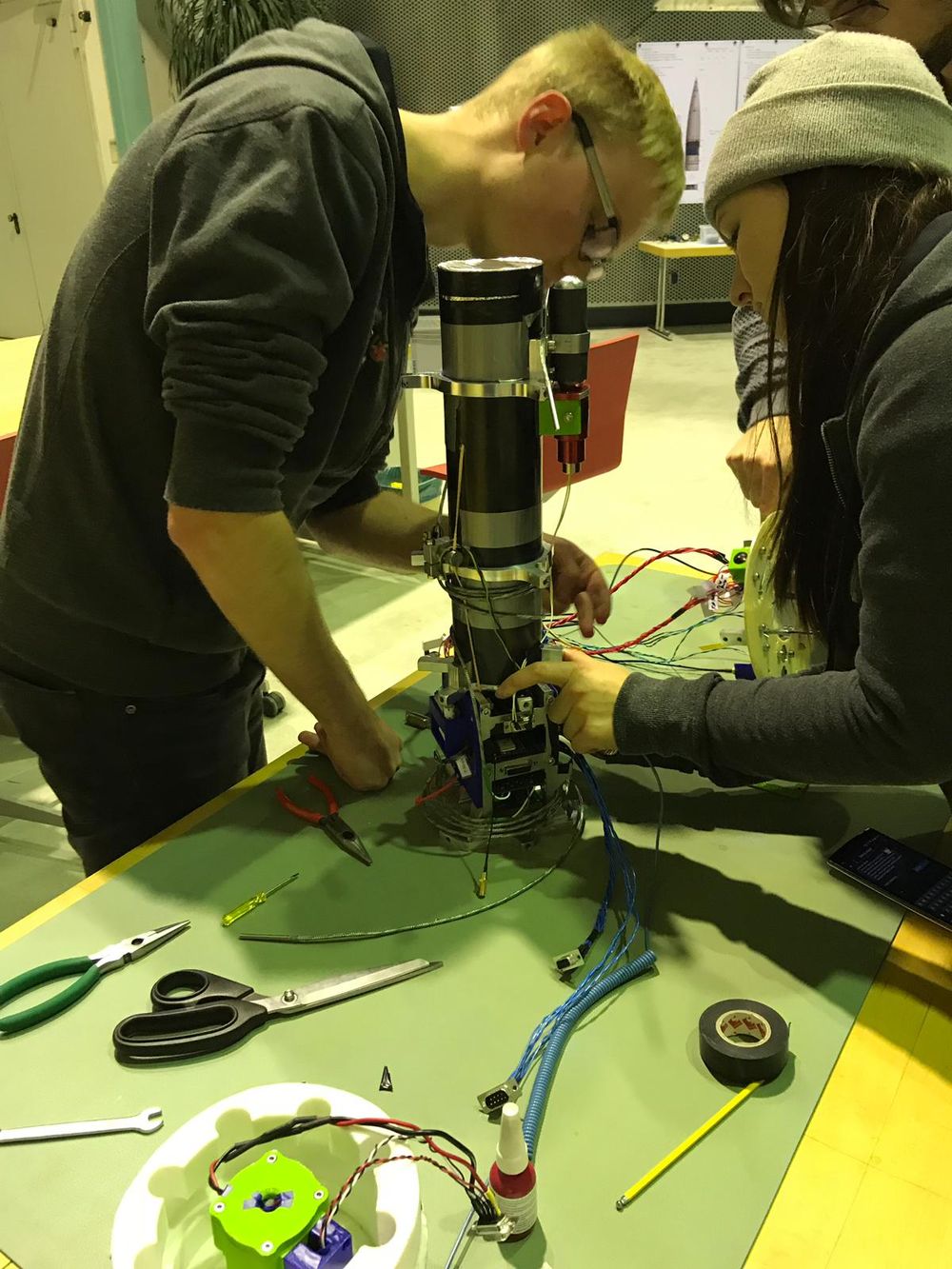
Pictures from the Integration Week in Bremen, Germany.
January 2019:
Here we are now. The experiment has been sent back to Kiruna since we need to fix some errors before the Bench Test that takes place at the end of January in Oberpfaffenhofen, Germany. We are also going to try to find some time to do exams. Wish us luck!
So that was a very summarized 2018 for BESPIN. If I would have written everything that we did during this year, then that would have been a very long blog post. But congratulations if you have read this far at least!
Happy New Year once again and see you in 2019!